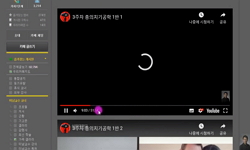우리나라의 대표적인 주거 형태인 아파트는 1990년대 수도권 신도시에 대규모 단지의 건설이 시작되면서 여러 건설 업체간에 각축장이 되면서 소비자는 좀 더 다양 한 아파트들을 접할 수 있...
http://chineseinput.net/에서 pinyin(병음)방식으로 중국어를 변환할 수 있습니다.
변환된 중국어를 복사하여 사용하시면 됩니다.
- 中文 을 입력하시려면 zhongwen을 입력하시고 space를누르시면됩니다.
- 北京 을 입력하시려면 beijing을 입력하시고 space를 누르시면 됩니다.
공동주택 전실형 현관 발코니의 사용실태와 거주자 만족도에 관한 연구 = (A) Study on the State of Entrance Balcony on Apartment Housing
한글로보기https://www.riss.kr/link?id=T9023542
- 저자
-
발행사항
수원 : 亞洲大學校 大學院, 2003
- 학위논문사항
-
발행연도
2003
-
작성언어
한국어
-
주제어
공동주택 ; 전실형 현관 발코니 ; 발코니 사용실태 ; 만족도
-
KDC
549.78 판사항(4)
-
발행국(도시)
경기도
-
형태사항
viii, 71p. : 삽도 ; 26cm
-
일반주기명
참고문헌: p. 61-62
- 소장기관
-
0
상세조회 -
0
다운로드
부가정보
국문 초록 (Abstract)
우리나라의 대표적인 주거 형태인 아파트는 1990년대 수도권 신도시에 대규모 단지의 건설이 시작되면서 여러 건설 업체간에 각축장이 되면서 소비자는 좀 더 다양 한 아파트들을 접할 수 있게 되었다. 이러한 양상 속에서 1992년경부터 급격히 많은 공급은 수요가 제 때 맞지 않으면서 미분양 아파트가 속출하게 되었고 이에 따른 분양을 위한 다양한 평면의 개발이 이루어지게 되었다. 이러한 개발 과정 중에 많은 논의들이 진행되었다. 이러한 계획 단계에서 결코 빠질 수 없는 평면 요소가 바로 발코니이다. 단위 주거 내에 공간 구성 방식 자체에 새로운 설계를 시도하는 경향과 함께 발코니의 비중이 높아지고, 발코니를 통하여 주거 내의 거실 현관으로 출입하는 형식을 갖춘 평면 형태가 나타나게 되었다.
이 계획 기법은 공용 공간인 계단실(엘리베이터실)과 사적 공간인 각 주호의 현관문 하나로만 구분되어 있어 전이, 매개, 완충 공간의 부채에 따른 문제들이 공동주택 계획상의 문제로 지적되면서 아파트에서도 전통 주거의 마당과 같은 준사적 공간을 조성하여 사적 공간의 원활한 연결 관계를 가지고 있는 새로운 차별화 계획 개발 과정에서 나타났다.
본 연구에서는 아파트의 평면 중에서 '전실형 현관 발코니'가 계획된 사례 단지를 선정 -분당, 용인 지역- 하여 그 현황과 이용 실태를 알아보고, 거주자가 요구하는 사항과 만족도, 선호도를 조사하여 문제점을 찾아내고 이를 바탕으로 앞으로 계획 할 때 개선 사항을 도출하는 것을 그 목적으로 한다.
본 연구의 진행은 다음과 같다.
첫째, 연구의 배경 및 목적, 방법 및 범위를 정리하고, 연구 문제를 정하고, 지금까지 발코니 관련 연구 현황을 분석한다.
둘째, 기존 연구와 문헌 고찰을 통해 아파트에 관한 역사적 배경을 이해하고, 발코니에 대한 개념, 유형의 변화 과정, 건축적 특징과 함께 관련 법규를 검토한다.
셋째, 전실형 현관 발코니를 가진 사례평면을 분석하고, 예비 설문을 통해 얻은 인자를 도출하고, 형태상·면적상으로 유형 분류한 변수를 사용하여 본 설문을 진행해서 얻은 결과로 거주자의 의식과 만족도, 선호도를 도출하여 개선 방안을 제시한다.
전실형 현관 발코니의 사용 실태에 대한 관찰과 거주자 의식과 만족도 설문을 분석해서 얻은 결론은 다음과 같다.
1. 전실형 현관 발코니 공간의 필요성
- 내부의 보조 공간으로만 활용되던 발코니를 외부와 내부 공간의 매개 공간으로 전혀 다른 성격의 공간으로 도출하여 계획 가능하다.
- 현재 전실형 현관 발코니 거주자들의 72%가 필요함을 느낀다고 조사되었다.
- 이는 단순히 출입 통로로만 느끼지 않고 내부 공간(거실)로 들어 가기 전 심리적 편안함과 함께 조망·시야를 확보하여 거주자의 안정감을 준다.
2. 물리적 개선 사항으로 다양한 형태와 바닥 재료의 요구
- 형태별 유형 분류에 따른 6가지 유형 중 전체 거주자가 볼록형을 가장 선호하고 있으며, 이는 최근에 생긴 유형이며 기존의 직선보다는 곡선의 부드러움을 선호하는 것으로 추측된다.
- 내부 공간뿐만 아니라 주동 외관을 이루는 요소로서도 다양한 형태의 발코니가 필요하다.
- 현재 주를 이루는 바닥 재료는 타일과 석재이며, 타일보다는 석재의 선호도가 약간의 우위도를 보여지고 있으며, 행위 빈도를 감안해 목재와 벽돌 마감을 병행하는 것이 좋을 수 있다.
3. 현관 발코니 크기(면적)와 폭
- 면적 유형별(5가지 유형) 물리적 만족도에서 반드시 크다고 만족도가 높지 않으며, 단위 주거 평면 면적에 맞추어 적절한 크기를 계획해야 하며, 거주자들은 전반적으로 현재 크기에 대체로 만족하고 있으며, 향후 계획할 때 조성 요구 사항으로 화단과 수도시설을 설치하고, 현행 법규를 최대화하여 (화단 15% 설치시 발코니 2m) 면적 효용성을 높일 수 있다.
- 폭에 대한 거주자 선호도는 평균 1.8m이상~2m미만을 선호하고 있으며, 이는 Christopher Alexander의 저서 "A Pattern Language" 에서 언급한 '발코니 폭 1.8m미만은 전혀 이용되지 못하는 공간으로서 사장되고 있다'고 했는데 이는 휴식 공간으로서 쓰임을 말하지만, 현관 발코니가 출입 통로로만 느끼지 않기 위해서는 그만한 폭이 요구된다.
4. 작은 마당으로서 새로운 주거 공간으로 모색
- 아파트 거주자들의 단독 주택에서의 전이 공간과 같은 '마당'과 유사한 성격의 공간 분위기를 위해서는 일정 부분 화초를 가꿀 수 있도록 화단, 수도시설, 배수구 등을 설치해 주고, 계획 단계에서부터 코어의 배치 조정을 통해 전실형 현관 발코니를 햇빛이 밝은 남향으로 배치할 수 있는 경우와 거실 현관 뿐만 아니라 전면 발코니로 진입하는 방식도 시도할 수 있다.
현관 발코니를 전용 면적을 감수하더라도 폭을 넓혀 하나의 독립된 외부 공간으로 조성하여 전통 주거의 툇마루와 같은 분위기를 연출할 수 있다.
다국어 초록 (Multilingual Abstract)
The competition over apartment housings since the introduction of so- called 'new town' in Metropolitan area has provided customers with a variety of selections. As early a s in 1992, supply of newly built apartment housing exceeded its demand, result...
The competition over apartment housings since the introduction of so- called 'new town' in Metropolitan area has provided customers with a variety of selections. As early a s in 1992, supply of newly built apartment housing exceeded its demand, resulting in massive unsold units. Constructors came up with several options of floor plans for the same size of units in order to boost sales. One of the most essential elements in diversifying floor plans is making the maximum use of balcony. Balcony has become a key point a s designers attempted new floor plans in the units. One of the newest trends was entering the living room through the balcony.
Apartment housings have two main elements; common areas, such a s stairs or elevators and private areas, divided only by a front door. Many experts pointed out apartment housings lack buffering zones or transit areas that can connect common areas with private areas. The new trends strived to design a semi-private area similar to a front yard in a traditional house.
This study aims at 1) investigating the status of entrance balcony at apartment housings in Bundang and Yongin area, 2 ) figuring out the degree of satisfaction and preference, and 3 ) suggesting improvement for the new plan development.
The progress of the study is a s follows;
First, the introduction describes the background, the object, the method, the issue of study, and analyzes the trends of the previous studies on balconies.
Second, the study reviews the history of apartments, the concept of balcony, the variation of types, the architectural characteristics and codes and regulations related to balcony through research.
Third, this thesis analyze the cases of plans with the entrance balcony. After a preliminary survey, the study derive factors that classify types of form and space. The study examine the residents' consciousness, satisfaction, and preference through the main survey, and then provide suggestions for improvements in the entrance balcony.
The followings are the conclusion derived from the survey on the usage of the entrance balcony and the residents' consciousness and satisfaction.
1. The necessity for entrance balcony
- Balconies are no longer an auxiliary space. New plan can utilize balcony a s an efficient space linking inner and outer spaces.
- About 72% of the residents with entrance balcony answered, they needed the entrance balcony.
- Entrance balcony serves not only a s an entrance but also as a space that provides psychological comfort and view.
2. Demands for different shapes and flooring materials
- There were six types of entrance balcony in terms of shapes. A majority of residents preferred curved style. This is a new trend
- New types of entrance balcony are needed to represent facade a s well as inner space.
- The most common flooring materials for balcony are tiles and stones. The latter is preferred to the former. Considering frequent usage, hardwood floor or brick is recommended.
3. The size and width of entrance balcony
- There were five sizes of entrance balcony. Preference does not necessarily depends on the spaciousness. The size of balcony should be coordinated with the size of each unit. Overall, residents were satisfied with the size of their balconies. Flower beds and installed tap water would make a balcony a better space. They can maximize the space efficiency under the current regulation that allows up to 2 m of width with the 15% space dedicated for flower beds.
- In terms of width, residents liked 1.8 m to 2 m, which proves Christopher Alexander's claim from A Pattern Language that "a balcony with less than 1.8 m in width is inefficient or useless." This means a balcony needs to be big enough in order to function properly as a space other than an entrance.
4. New residential space as a small yard
- Flower beds, installed tap water, and sewage would provide residents of apartment units with transit space similar to "yard." During the planning stage, balcony needs to be positioned in bright side facing the south.
- An aggressive approach would be maximizing the balcony space to make it an independent outer space as we can find in a traditional house.
목차 (Table of Contents)
- 목차 = ⅳ
- 제1장 서론 = 1
- 1.1 연구의 배경 및 목적 = 1
- 1.2 연구 문제 = 3
- 1.3 연구 범위와 방법 = 4
- 목차 = ⅳ
- 제1장 서론 = 1
- 1.1 연구의 배경 및 목적 = 1
- 1.2 연구 문제 = 3
- 1.3 연구 범위와 방법 = 4
- 1.4 연구의 흐름도 = 6
- 1.5 선행 연구의 분석 = 7
- 1.6 용어의 정리 = 8
- 제2장 공동주택에 대한 이론적 고찰 = 9
- 2.1 공동주택의 개념과 변화 = 9
- 2.2 우리 나라 공동주택의 역사적 배경 = 12
- 2.2.1 1960년대 이전의 공동주택 = 12
- 2.2.2 1960년대 이후 본격적인 공동주택 = 13
- 2.2.3 1970년대 대단위 단지 개발의 본격화와 획일화 = 15
- 2.2.4 1980년대 - 도시적 계획 기법의 실험, 대규모 단지 개발 = 17
- 2.2.5 1990년대 - 수도권 5개 신도시 개발과 고밀화, 초고층화 = 20
- 제3장 발코니에 대한 이론적 고찰 = 23
- 3.1 발코니의 정의와 의미 = 23
- 3.1.1 발코니의 정의 = 23
- 3.1.2 발코니의 의미 = 24
- 3.1.2.1 전통적인 의미 = 24
- 3.1.2.2 현대적인 의미 = 25
- 3.2 발코니의 기능과 형태 = 26
- 3.2.1 발코니의 기능 = 26
- 3.2.2 발코니의 형태 = 27
- 3.2.2.1 기능 및 의장에 따른 분류 = 27
- 3.2.2.2 평면 구성에 따른 발코니 형태 분류 = 28
- 3.3 발코니의 환경 특성 = 30
- 3.3.1 발코니의 물리적 환경 특성 = 30
- 3.3.2 발코니의 심리적 환경 특성 = 30
- 3.4 발코니 관련 법규 검토 및 분석 = 31
- 제4장 조사 대상의 개요와 특성 = 34
- 4.1 조사대상 선정 = 34
- 4.2 조사방법 및 분석방법 = 36
- 4.3 조사대상의 특성과 유형 = 37
- 4.3.1 사례 단지의 개요 및 특성 = 37
- 4.3.2 사례 단지의 형태적 유형화 = 43
- 제5장 연구 조사 결과 = 44
- 5.1 전체적인 사용 현황 = 44
- 5.1.1 현관 발코니의 현황 = 44
- 5.1.2 현관 발코니의 사용실태 = 45
- 5.2 거주자의 현관 발코니에 대한 의식 조사 = 46
- 5.3 유형별 물리적 만족도 = 50
- 5.3.1 형태 유형별 만족도 = 50
- 5.3.2 면적 유형별 만족도 = 52
- 5.4 선호도와 개선사항 = 54
- 5.4.1 형태 유형별 선호도 = 54
- 5.4.2 물리적 개선 사항 = 56
- 제6장 결론 = 59
- 참고문헌 = 61
- Abstract = 69












